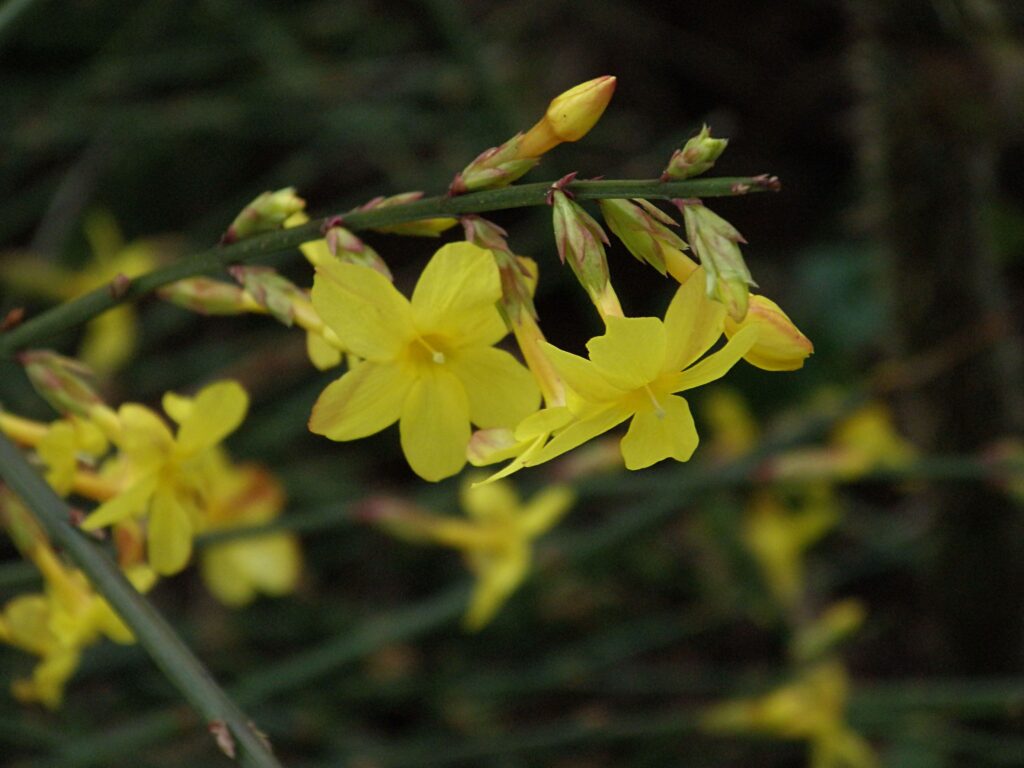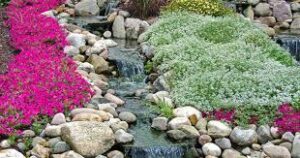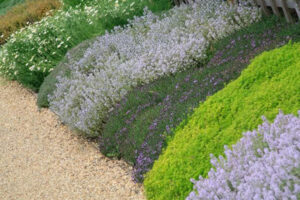Introduction
Erosion control is a critical aspect of landscape management, especially on slopes where soil can easily wash away during heavy rains. Shady slopes present a unique challenge, as the lack of sunlight limits the types of plants that can thrive. However, there are several ground covers that not only tolerate shade but also excel at stabilizing soil and preventing erosion. In this article, we’ll explore 13 erosion control ground covers specifically suited for shady slopes. These plants will help you maintain a healthy, stable landscape while adding beauty and biodiversity to your garden.
Why Erosion Control is Important
The Impact of Erosion
- Soil Loss: Erosion removes the top layer of soil, which is rich in nutrients and organic matter.
- Water Pollution: Sediment from eroded soil can pollute nearby water bodies, harming aquatic ecosystems.
- Landscape Damage: Erosion can create unsightly gullies and destabilize slopes, leading to potential landslides.
Benefits of Ground Covers for Erosion Control
- Root Systems: Ground covers have extensive root systems that hold soil in place.
- Surface Coverage: Dense foliage protects the soil from the impact of rain and wind.
- Water Absorption: Ground covers help absorb and slow down runoff, reducing erosion.
13 Erosion Control Ground Covers for Shady Slopes
1. Pachysandra (Pachysandra terminalis)
- Height: 6-12 inches
- Spread: 12-18 inches
- Features: Pachysandra, or Japanese spurge, is a hardy ground cover with glossy, evergreen leaves and small white flowers in early spring.
- Care: Thrives in rich, well-drained soil. Ideal for deep shade.
2. Vinca Minor (Vinca minor)
- Height: 4-6 inches
- Spread: 12-18 inches
- Features: Vinca minor, or periwinkle, has glossy, evergreen leaves and produces blue or purple flowers in spring.
- Care: Prefers moist, well-drained soil. Thrives in partial to full shade.
3. Sweet Woodruff (Galium odoratum)
- Height: 6-12 inches
- Spread: 12-18 inches
- Features: Sweet woodruff has whorls of bright green leaves and small white flowers in spring. It also has a sweet, hay-like fragrance.
- Care: Prefers moist, well-drained soil. Ideal for partial to full shade.
4. Wild Ginger (Asarum canadense)
- Height: 6-8 inches
- Spread: 12-18 inches
- Features: Wild ginger has heart-shaped, dark green leaves and produces small, maroon flowers hidden beneath the foliage.
- Care: Prefers moist, well-drained soil. Ideal for partial to full shade.
5. Foamflower (Tiarella cordifolia)
- Height: 6-12 inches
- Spread: 12-18 inches
- Features: Foamflower has heart-shaped leaves and produces spikes of white or pink flowers in spring.
- Care: Prefers moist, well-drained soil. Ideal for partial to full shade.
6. Bishop’s Hat (Epimedium spp.)
- Height: 8-12 inches
- Spread: 12-18 inches
- Features: Bishop’s hat, or barrenwort, has delicate, heart-shaped leaves and produces small, colorful flowers in spring.
- Care: Prefers well-drained soil. Thrives in partial to full shade.
7. Allegheny Spurge (Pachysandra procumbens)
- Height: 6-12 inches
- Spread: 12-18 inches
- Features: Allegheny spurge has mottled, evergreen leaves and produces small white flowers in spring.
- Care: Prefers moist, well-drained soil. Ideal for partial to full shade.
8. Creeping Phlox (Phlox stolonifera)
- Height: 6-8 inches
- Spread: 12-18 inches
- Features: Creeping phlox has needle-like leaves and produces clusters of pink, purple, or white flowers in spring.
- Care: Prefers well-drained soil. Thrives in partial shade.
9. Golden Creeping Jenny (Lysimachia nummularia ‘Aurea’)
- Height: 2-4 inches
- Spread: 12-18 inches
- Features: Golden creeping Jenny has bright yellow-green leaves and produces small yellow flowers in summer.
- Care: Prefers moist, well-drained soil. Tolerates partial shade.
10. Mazus (Mazus reptans)
- Height: 2-4 inches
- Spread: 12-18 inches
- Features: Mazus has small, green leaves and produces purple or white flowers in spring and summer.
- Care: Prefers moist, well-drained soil. Thrives in partial to full shade.
11. Lily of the Valley (Convallaria majalis)
- Height: 6-12 inches
- Spread: 12-18 inches
- Features: Lily of the valley has arching, dark green leaves and produces fragrant, bell-shaped white flowers in spring.
- Care: Prefers moist, well-drained soil. Thrives in partial to full shade.
12. Hostas (Hosta spp.)
- Height: 6-36 inches (depending on variety)
- Spread: 12-48 inches
- Features: Hostas are known for their large, lush leaves and spikes of lavender or white flowers in summer.
- Care: Prefers rich, well-drained soil. Thrives in partial to full shade.
13. Ajuga (Ajuga reptans)
- Height: 2-4 inches
- Spread: 12-18 inches
- Features: Ajuga, also known as bugleweed, is a fast-spreading ground cover with glossy, dark green leaves and spikes of blue, purple, or white flowers in spring.
- Care: Prefers moist, well-drained soil. Tolerates partial to full shade.
Tips for Planting and Maintaining Ground Covers on Shady Slopes
Soil Preparation
- Amend the Soil: Add organic matter like compost to improve soil structure and fertility.
- Ensure Good Drainage: Shaded slopes can retain moisture, so ensure proper drainage to prevent root rot.
Planting Techniques
- Terracing: Create terraces or steps on steep slopes to reduce the angle and make planting easier.
- Mulching: Apply a layer of mulch to retain moisture and suppress weeds.
- Spacing: Follow spacing guidelines to allow plants to spread and fill in the area without overcrowding.
Maintenance
- Watering: Keep the soil consistently moist, especially during the establishment period.
- Fertilizing: Apply a balanced fertilizer in spring to promote healthy growth.
- Pruning: Trim back overgrown plants to maintain their shape and encourage new growth.
Conclusion
Erosion control on shady slopes can be effectively managed with the right selection of ground covers. The 13 plants listed in this article not only stabilize soil but also add beauty and biodiversity to your landscape. By choosing the appropriate ground covers and following proper planting and maintenance techniques, you can create a lush, stable garden that thrives even in challenging conditions. So, take the first step towards a healthier, more beautiful landscape by incorporating these erosion control ground covers into your shady slopes.



